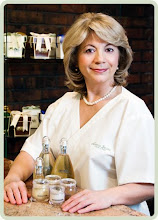The Perimenopause Paradox Part 1: Crazy, Mixed-Up Skin
For many women, their 40s and 50s are the worst of all possible times for their skin. They’re facing not only the return of the blackheads and blemishes that plagued their teenage years, but also the steady accumulation of the visible signs of aging. As one of clients said recently, “Having to deal with wrinkles and acne at the same time just isn’t fair!”
- · Hormonal havoc Although female hormones start dwindling during periomenopause, they seldom go quietly. Levels can fluctuate wildly from day to day and week to week to week. The chain reaction that ultimately leads to an acne flare begins with a spike in androgen levels. As androgen levels rise, the dermal sebaceous glands get bigger. The amount of sebum, or oil, produced by these enlarged glands increases as a result.
- · Inflammation As excess oil pumped out by the sebaceous glands accumulates in pores and hair follicles it combines with dead skin cells, forming sticky clumps. These clumps of organic matter not only clog pores but also serve as a hearty feast for the different species of bacteria that live there. The fatter and happier these bacteria get, the more they reproduce. The resulting boom in the bacteria population inflames the pores, causing pustules and whiteheads to erupt. Other unsightly manifestations of inflammation such as contact dermatitis, rashes, and dry itchy patches may also develop. These factors together with declining cell function often lead to "combination skin" with oiliness and acne in some areas dryness and flakiness in others.
- · Free radical damage Decades of exposure to UV radiation, toxins, and other environmental stressors—as well as the accumulated byproducts of normal metabolic processes—impair the functioning of skin cells and speed their death.
- · Sluggish circulation A variety of factors, including diet, genetics, and habits like cigarette smoking, may reduce blood flow to the skin, depriving it of oxygen and other vital nutrients.
- · Diminished collagen and elastin production In addition to contributing to skin cancer and a host of degenerative diseases, free radical damage interferes with the renewal of collagen and elastin cells. The network of protein fibers formed by these cells supports the skin. When the influx of fresh cells needed to reinforce this supportive network slows, skin starts losing firmness, strength, and elasticity.
- · Decreased cell turnover As dead cells build up on its surface, skin not only looks increasingly lackluster, but also becomes more susceptible to acne.
- · Habitual facial expressions Sooner or later, a lifetime of smiles, frowns, squints, and other outward expressions of thoughts and feelings leaves lasting imprints on our face.
- · Gravity The lifelong pull of Earth’s magnetic core can lead to jowls and sags when skin becomes thin and weak.
Labels: acne, circulation, collagen, free radicals, inflammation, skin care regimen


0 Comments:
Post a Comment
Subscribe to Post Comments [Atom]
<< Home